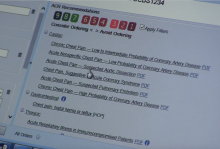A novel new study provides compelling evidence that the design, development and implementation of electronic health records (EHRs) need to be improved to make them easier to use by clinicians and, ultimately, safer for patients.
© Copyright Wainscot Media. All Rights Reserved.
Subscribe Now

